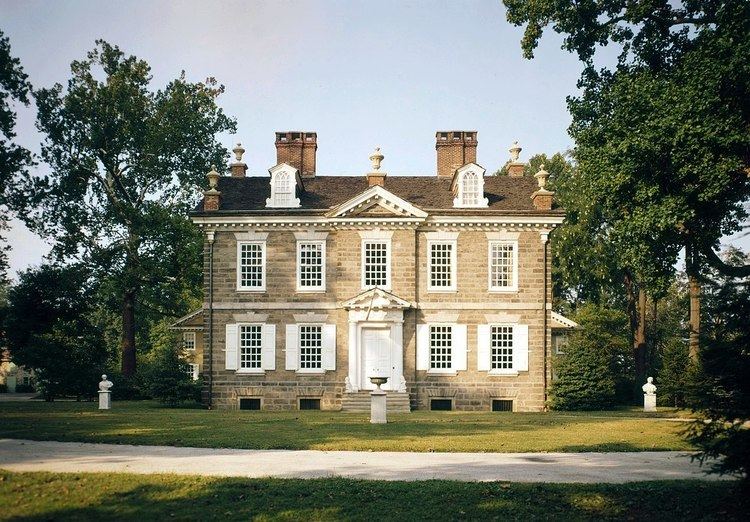Built 1763–1767 Opened 1767 Architectural style Georgian architecture Added to NRHP 1966 | NRHP Reference # 66000677 Area 2 ha Phone +1 215-848-1777 | |
 | ||
Location 6401 Germantown Avenue
Germantown, Philadelphia, Pennsylvania, USA Address 6401 Germantown Ave, Philadelphia, PA 19144, USA Hours Closed today TuesdayClosedWednesdayClosedThursday12–4PMFriday12–4PMSaturday12–4PMSunday12–4PMMondayClosed Similar Grumblethorpe, John Johnson House, Germantown White House, Wyck House, Hill‑Physick House Profiles | ||
Cliveden (/ˈklɪvdən/ KLIV-dən), also known as the Benjamin Chew House, is a historic mansion in Germantown, Philadelphia, Pennsylvania. It was the scene of some of the bloodiest fighting of the Battle of Germantown, fought in 1777 during the American Revolutionary War.
Built between 1763 to 1767, by Benjamin Chew, the mansion was inhabited from colonial times by seven generations of the Chew family, until 1972. Chew was head of the Pennsylvania Judiciary System under both Colony and Commonwealth, and Chief Justice of the Supreme Court of the Province of Pennsylvania. From his legal mentor, Andrew Hamilton, he inherited Hamilton's lifelong clients, the descendants of William Penn.
For Chew's safety, the Executive Committee of the Continental Congress forcibly removed him and his family from Cliveden, as his close friend, George Washington, was ordering his troops to move towards Philadelphia. British Colonel Musgrave then quickly occupied the sturdily built mansion and fought off the attack from within with muskets and bayonets. Washington's army was repelled and driven back down Germantown Avenue in defeat.
House and property
In 1966, Cliveden was designated a National Historic Landmark, part of the Colonial Germantown Historic District. The National Trust for Historic Preservation operates Cliveden as a historic house museum and offers tours from April through December. Significance:
Cliveden is an outstanding example of Philadelphia Georgian architecture. Probably designed by Chew and Jacob Knor, a master carpenter, the stone masonry house has particularly fine interior woodwork.
The original estate included a number of other structures, including a stable and coach house, a smoke house, hen house, and summer house. The landscaping features statuary and gardens with over 200 varieties of trees and scrubs. In 1868, a two-story addition was added in the original courtyard. A window on the second-floor stair landing in the main house was converted into a hidden doorway to create an entrance to the addition.
The Chew Family Papers, containing an extensive collection of correspondence, documents, financial records and other materials, are available for research use at the Historical Society of Pennsylvania.
